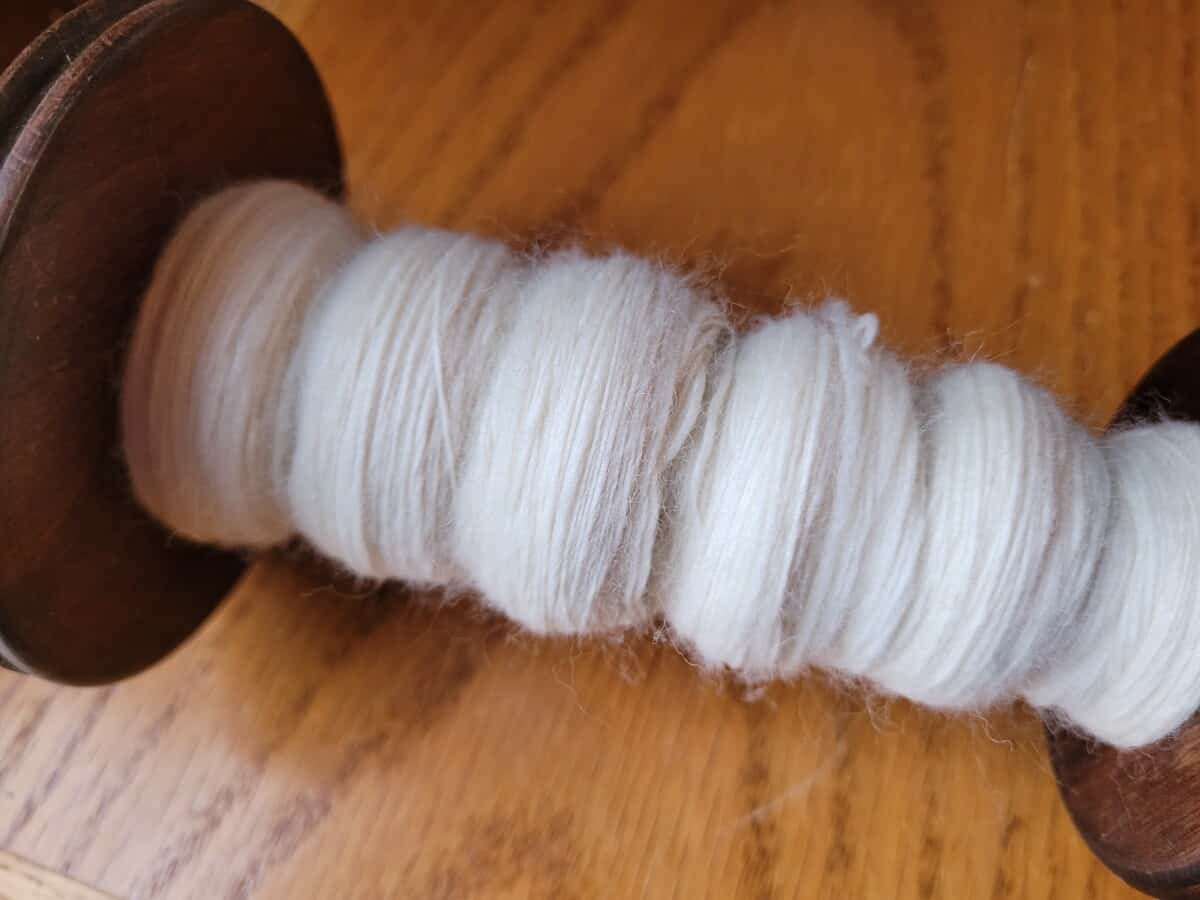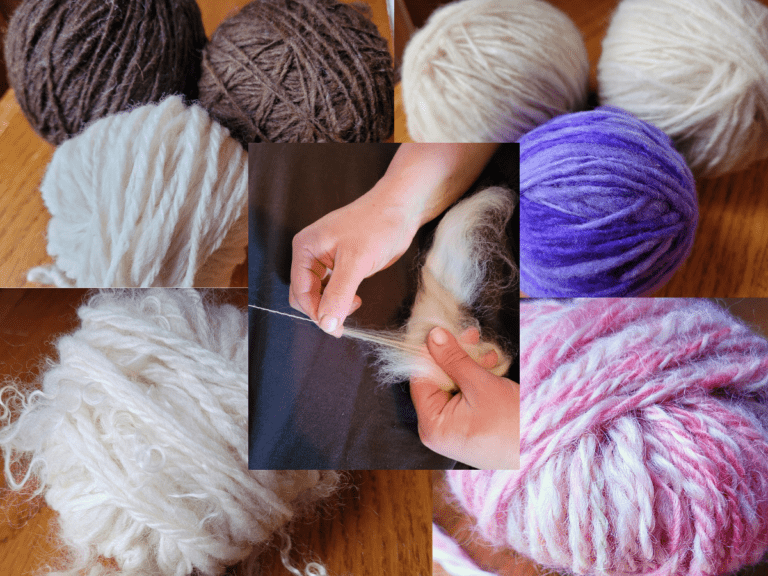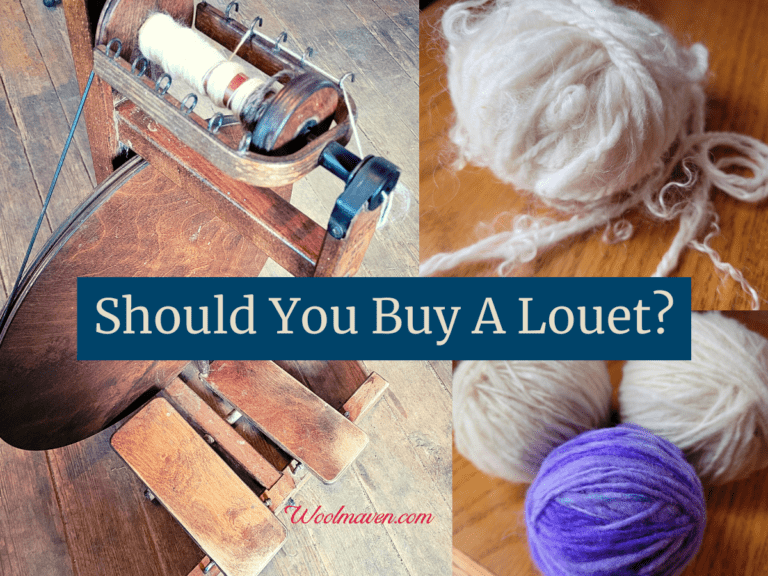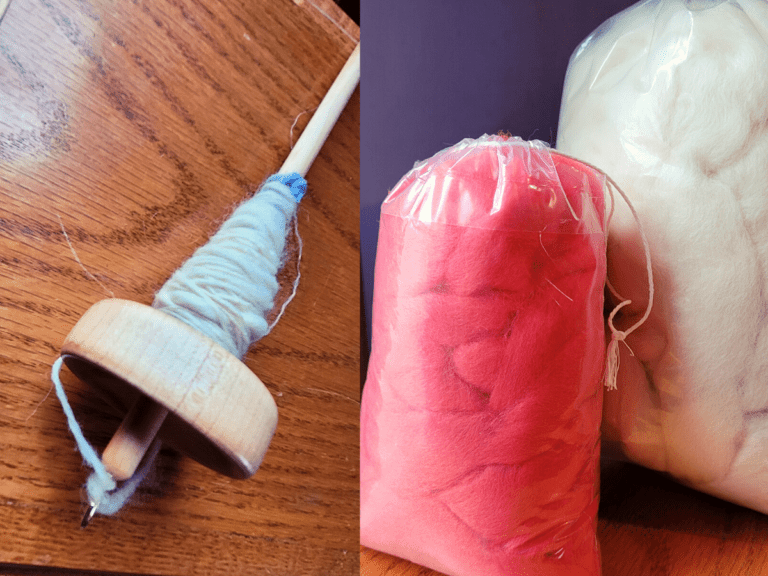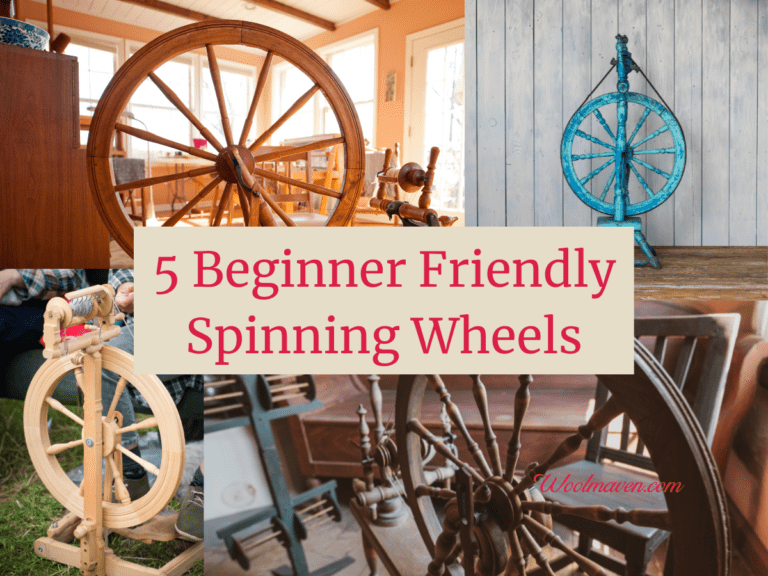Is A Spinning Wheel Still Used Today?
Spinning wheels are seen in historical photographs, old movies and fairytales, so we all know what they are, but are spinning wheels still used today?
Spinning wheels are commonly used today
Spinning wheels are commonly used today, everyday, by fiber loving folks around the world. Actually, spinning your own yarn, called handspinning is an increasingly popular pastime for many people who enjoy handcrafts.
Is Spinning Your Own Yarn Worth It? goes into the costs and benefits of handspinning yarn.
Who handspins yarn?
All manner of people enjoy handspinning yarn on their spinning wheels. It has become a popular craft based pastime that is suitable for nearly all ages of learners and practitioners.
I didn’t learn to spin until I was in my early 20’s, but that does not mean you have to be an adult to learn handspinning!
Plenty of folks learn when they are younger, you’d probably need to be at least school aged to work the wheel, while just as many if not more handspinning enthusiasts learn as adults.
Handspinning yarn is truly a nearly all age craft that is doable for most anyone who is willing to learn.
One of the things about handspinning that makes it doable for so many people is that it is a creative and relaxing pastime you can do in your home or apartment while sitting, perfect for those cold or rainy days!
Do You Need To Take A Class To Learn To Spin Wool? walks you through whether or not taking a class is your best option.
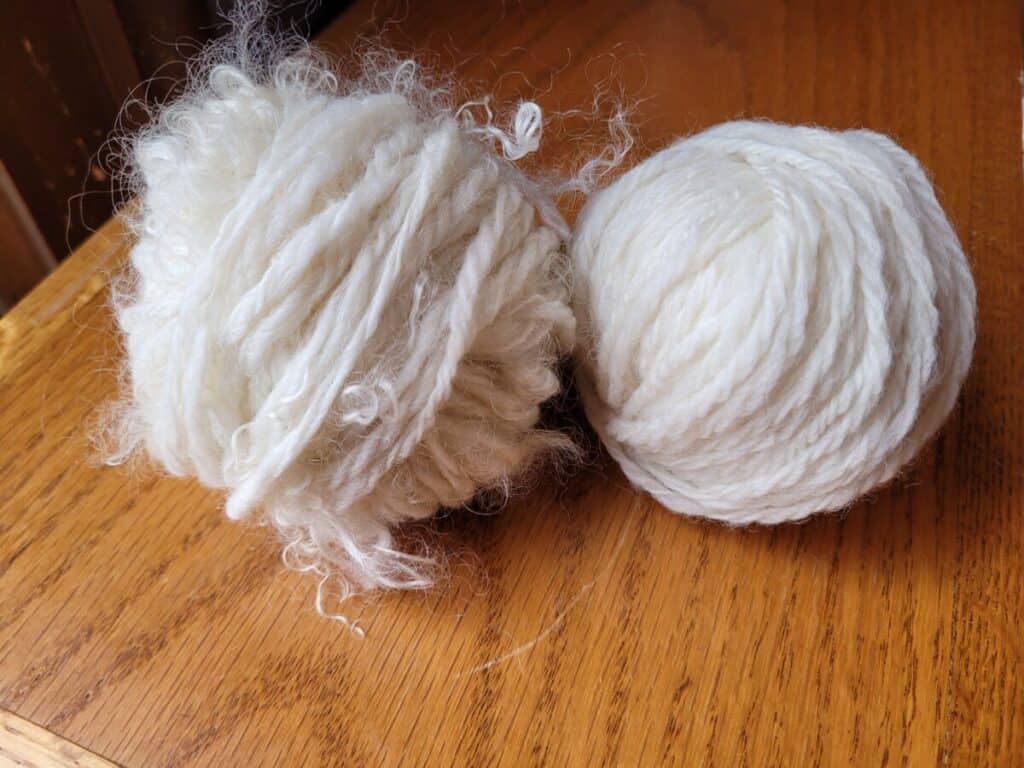
What type of yarn is handspun?
The type of yarns that are handspun will depend upon two main things: the fibers used to make the yarn and the structure of the yarn, meaning how specifically the yarn is made.
Fibers that can be made into yarn are:
- wool from nearly any breed or cross of breeds of sheep
- angora (rabbit fiber)
- alpaca
- llama
- mohair (long goat fiber)
- cashmere (super soft goat fiber)
- bamboo
- silk
- cotton
- mint
- nettles
- pineapple
- synthetics
There are more fiber that can be made into yarn, these are just a few of the ones I come across when looking at fiber options for sale online.
Yarn can be made from a mix of fibers
Additionally, some folks choose to spin a blend of fibers, which could be a protein fiber and a plant fiber or synthetic fiber or a few different protein fibers, rather than spinning a yarn with one type of fiber in it.
The reason to mix fibers in a yarn is to get some of the characteristics of each fiber in the finished yarn.
For instance, if you wanted a sock yarn that had a bit more resilience, putting in some mohair will make the socks hold up better, rather than just a yarn made of a finer wool.
The other reason to mix fibers is to get aesthetic or tactile differences, like putting in a bit of silk or synthetic fibers like sparkle. These additions don’t really add function as much as they add fun.
Notice that some of these are from animal sources, like the wool, alpaca and angora, and some are plant sources like the mint and nettles.
There are different handspinning techniques
The second aspect of spinning that determines the yarn made is how exactly the yarn is put together, meaning how the fiber is prepared for spinning as well as how specifically the fiber is spun.
This is one of the beauties of hanspinning yarn, each skein of yarn is a one of a kind creation based on fiber content as well as spinning style, twist, ply and diameter.
Yarn can be spun woolen, which makes fluffier, more insulating yarn or worsted, which makes stronger yarn that shows stitch work more clearly.
Yarns can also be spun in a variety of diameters, from very fine, like thread or very thick almost like a small rope.
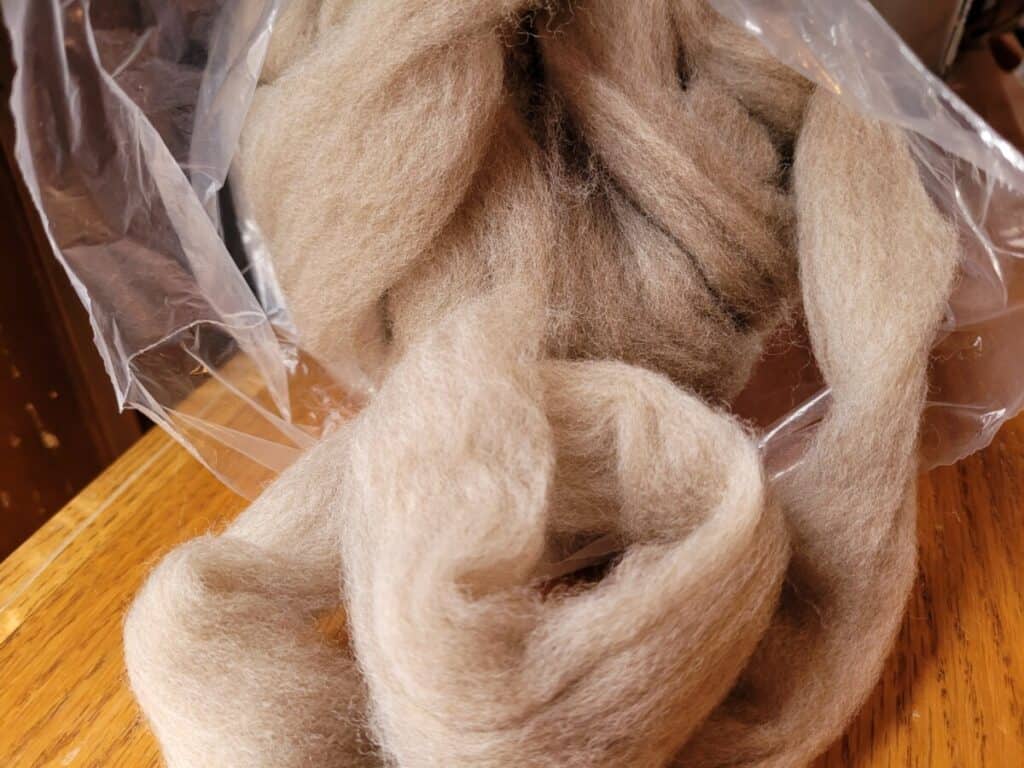
Why do people hand spin yarn?
People today are usually handspinning as a relaxing and creative way to make one of a kind yarn that is used for a hobby like knitting or weaving, or to be sold as a side business through online shops like Etsy.
Traditionally, by which I mean before the industrial revolution, handspinning was a way for a family to make money from home, by making cloth or other hand crafted items like lace out of the yarn.
It’s easy to me to forget that all of our modern conveniences are just that, modern. Before weaving or spinning mills, if yarn was made, it was done by hand at home, normally with a wheel.
Handspinning is an old skill that some folks around the world still practice as a necessity, but most folks who spin yarn do not need to spin their own yarn, they choose to spin it as a hobby or a side business.
If you look around online, the easiest place to go for a large selection is Etsy, you’ll see that a huge number of people are creating handspun yarns to sell as a side business.
While some folks love to spin, other folks are not really into spinning yarn but love to use the handspun yarns in projects, like knitting, crochet or weaving.
Not liking or wanting to spin seems a bit crazy to me, I much prefer spinning to knitting or crochet, but it only makes sense that there are folks who have the opposite preferences, as well.
This is a perfect opportunity for anyone who loves to spin to pass on their creatively made yarns to the next person to put that beautiful yarn into a project.
I’d guess that there are more knitters and crocheters than there are handspinners, which is a good fit actually, since one handspinner could keep a few hand crafters busy, especially if using yarn is a hobby.
There are many types of spinning wheels
Today there are many types of spinning wheel available to the handspinner.
Some wheels have a very traditional look, with a large spindled wheel and single treadle, that look more like decoration, since they are so beautifully made, than the working machine they are.
Other wheels have a more modern look or design, like the wheel that I have, which is a Louet double treadle wheel. It does not look traditional, at all, but is easy to use and works great for me.
Yet another category of spinning wheels is what I would call portable wheels.
These are spinning wheels that have a small footprint and are compactly made so they are easy to carry with you where ever you want to spin, whether outdoors or at social events.
Other differences in wheels that will be harder to see at first are in the type of spinning the wheel does best, thin or bulky, and the way the wheel actually spins the bobbin and/or flyer, called drive or tension.
Here is a great selection of spinning wheels at The Woolery. Of course, there are other stores that stock and sell wheels, this is a good place to start your search.

